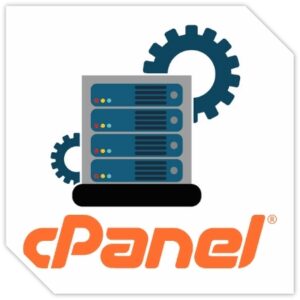
Table of Contents
Common issues in cPanel can vary depending on factors such as server configuration, software versions, and user activities. However, some frequent issues that users may encounter in cPanel include:
Effective File Management Techniques
- Effective file management techniques are essential to ensure an organized and efficient workflow. By following these practices, you can optimize file accessibility, security, and overall productivity.
- Organize files systematically: Create a clear and logical file structure to ensure easy access and retrieval of files.
- Use descriptive file names: Give files clear and concise names that accurately reflect their content. This makes it easier to locate specific files.
- Implement version control: Keep track of different versions of files by using a version control system. This allows you to easily revert to previous versions if needed.
- Backup files regularly: Regularly backup your files to prevent loss or corruption. This can be done manually or using automated backup systems.
- Remove unnecessary files: Regularly clean up your file system to remove any unused or outdated files. This helps improve storage space and organization.
- Implement file permissions: Set appropriate file permissions to ensure the security and privacy of your files. Only provide access to authorized individuals.
- Use file compression: Compress large files or folders to save storage space and facilitate faster file transfers.
- Implement file sharing and collaboration tools: Utilize tools that enable easy sharing and collaboration on files, such as cloud storage platforms or project management systems.
- Regularly update software: Keep your file management software up to date to benefit from the latest features and security improvements.
Website Errors:
Errors or issues with websites hosted on cPanel, such as HTTP errors (e.g., 500 Internal Server Error), database connection errors, or website downtime. These issues may stem from misconfigured server settings, programming errors, or resource limitations.
File Management:
Difficulties managing files and directories through cPanel’s File Manager, such as file permissions errors, inability to upload or download files, or issues with file synchronization.
Backup and Restore:
Problems with cPanel’s backup and restore functionality, such as incomplete backups, failed backups, or difficulties restoring backups due to compatibility issues or insufficient disk space.
DNS Configuration:
Issues related to domain name system (DNS) configuration, such as incorrect DNS settings, DNS propagation delays, or problems with adding or updating DNS records.
SSL Certificate:
Troubles with SSL certificate installation, renewal, or configuration, leading to security warnings or SSL-related errors when accessing websites over HTTPS.
Security Concerns:
Security-related issues, such as unauthorized access to cPanel accounts, compromised passwords, malware infections, or server vulnerabilities.
Resource Limitations:
Performance issues or downtime caused by resource limitations, such as high CPU usage, memory exhaustion, or disk space constraints.
Third-Party Applications:
Compatibility issues or conflicts with third-party applications, plugins, or scripts installed on cPanel accounts, leading to functionality problems or errors.
Control Panel Settings:
Configuration errors or issues with cPanel settings, such as misconfigured PHP settings, DNS clustering problems, or issues with addon domains and subdomains.
Regular Server Monitoring and Maintenance in cPanel
Regular server monitoring and maintenance are vital for the smooth operation and security of your Cpanel web hosting. It involves actively observing your server to ensure optimal functioning and taking necessary actions to prevent any potential issues.
1. Continuously monitor server performance: Observing the performance of your server regularly helps identify potential bottlenecks or problems that may impact your website’s overall functioning. By regularly analyzing server logs and performance metrics, you can promptly identify and address any performance issues.
2. Keep software and patches updated: Regularly updating software and applying patches is essential to maintain the security and stability of your server. This includes updating the operating system, control panel, and other software components to ensure they are up to date with the latest security protocols and bug fixes.
3. Back up your data: It is crucial to regularly back up your website and server data to protect against data loss in case of unforeseen events. Implement a backup strategy that includes scheduled backups and offsite storage to ensure the safety and easy recovery of your data.
4. Check for security vulnerabilities: Regularly scanning your server for security vulnerabilities is important to identify and fix any potential weaknesses. This includes checking for outdated software, insecure configurations, and implementing appropriate security measures such as firewalls and intrusion detection systems.
5. Monitor server resources: Regularly monitoring server resources such as CPU usage, memory utilization, and disk space ensures that your server can handle incoming traffic and website operations effectively. By monitoring resource usage, you can identify any potential constraints and take necessary actions to optimize performance.
Pro-tip: Consider implementing automated monitoring and maintenance tools that can streamline the process of regular server monitoring and ensure timely detection and resolution of any issues. These tools can save time and effort, allowing you to focus on other important aspects of your website and business.
To address these issues, users can troubleshoot the problem directly within cPanel or seek assistance from their hosting provider’s support team. It’s essential to keep cPanel and server software up to date, regularly monitor server health and performance, and follow best practices for security and optimization to prevent and mitigate common issues.